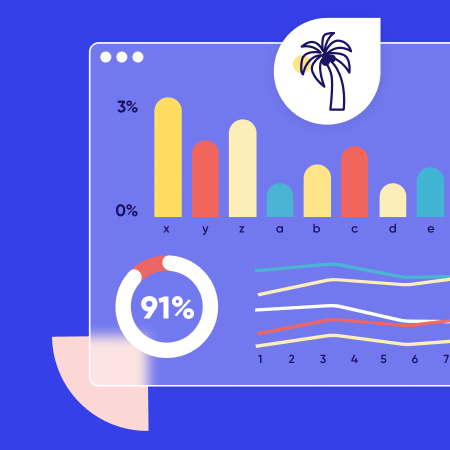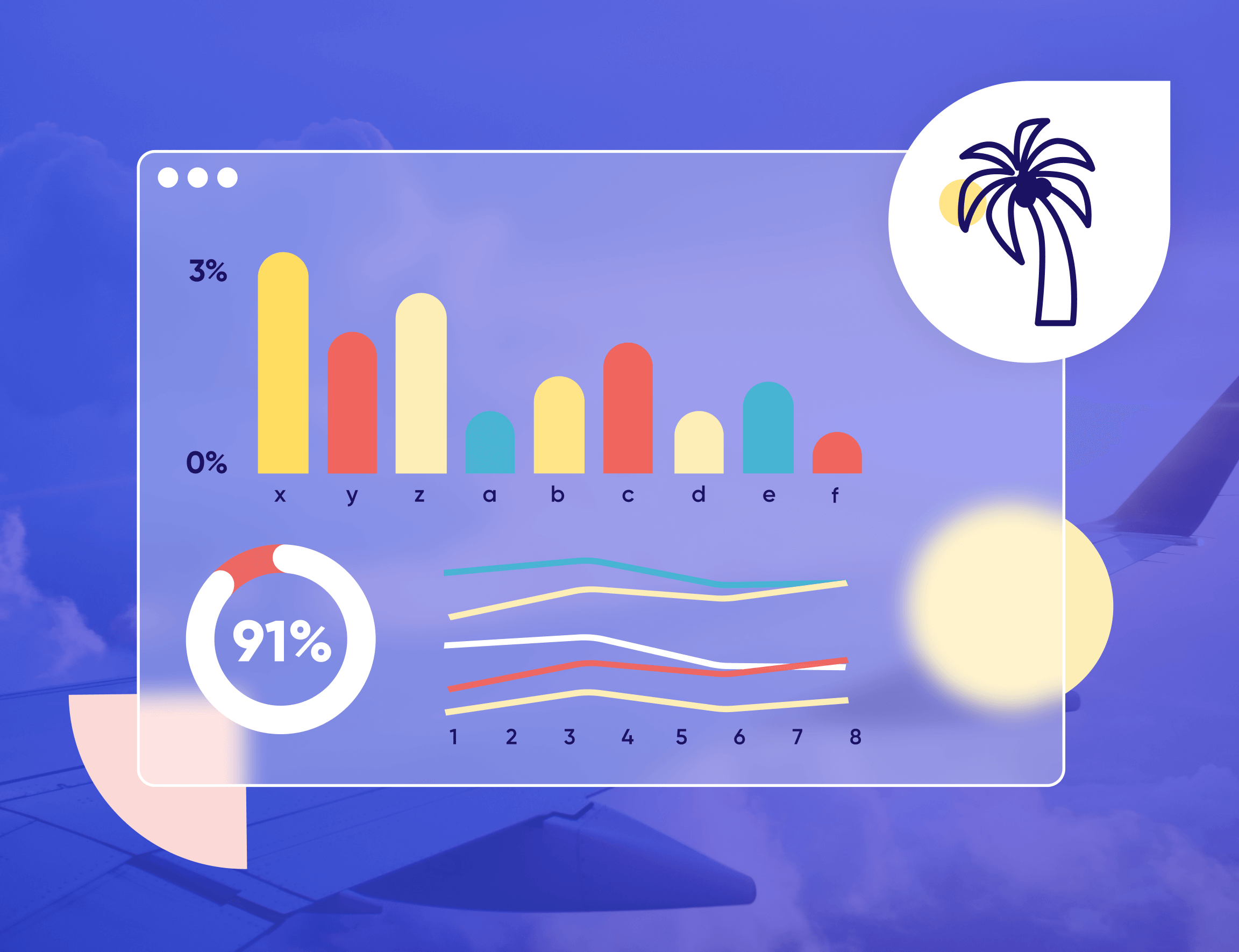
2022 Travel Digital Experience Benchmark Report
Get insights to deliver better, more human digital experiences.

The travel and hospitality industry is slowly but surely bouncing back, with performance improving considerably in recent months. With the summer season fast approaching, now is the perfect time to level up your digital experience in preparation for customers who are excited to plan their next vacation.
To do that, you need the latest data on travel industry trends and insight into digital customer behavior. So, we’ve gathered the top five findings from our 2022 Travel Digital Experience Benchmark Report to help you prepare your digital strategy for success.
2022 Travel Digital Experience Benchmark Report Get insights to deliver better, more human digital experiences.
Mobile traffic to travel and hospitality sites is booming! We found mobile was the device of choice for many travel customers, accounting for 60% of online traffic in 2021—that’s a 7% increase from 2020. Clearly, travelers are happy to browse for holidays and experiences on their smartphones.
| Desktop 2020 | Desktop 2021 | Mobile 2020 | Mobile 2021 | Tablet 2020 | Tablet 2021 |
| 41% | 38% | 56% | 60% | 3% | 2% |
In order to win customers, travel brands need to ensure their mobile experience is smooth and logical by using data-driven insights to optimize their mobile sites and apps. Only by understanding your mobile journey and your customer segments can you streamline your travel site’s UX to increase conversion rate and revenue.
Take it from the pros: By leveraging user experience insights to optimize its mobile booking experience, a leading hotelier gained a $95k increase in yearly revenue. Now that’s impressive! To find out what they did to get such incredible results, download the report today.
Although mobile traffic is on the rise, when it comes to time spent browsing, we found users are more likely to spend longer browsing on desktop (6 minutes and 59 seconds) compared with mobile (3 minutes and 30 seconds). This indicates that mobile users prefer it short and snappy, while desktop users are willing to spend more time looking for their next adventure.
| Device Type | Avg. Time Spent per Session |
| Desktop | 0:06:59 |
| Mobile | 0:03:30 |
The customer experience (CX) between mobile and desktop visits should be different to achieve optimal results for each audience. So, consider building unique journeys tailored to meet the expectations of both casual mobile browsing sessions and analytical desktop sessions.
Today’s traveler wants quick answers and expects immediate results—if their experience on your site is too slow, they’re likely to get frustrated and go elsewhere. In fact, the likelihood of a user bouncing increases by 32% between the first 1 and 3 seconds.
If there’s one thing you should prioritize this year to improve your site experience and increase customer satisfaction, it’s getting your loading times as low as they can go. At a minimum, travel brands should aim to nail all of their Core Web Vital scores.
Using site performance tools, like Contentsquare’s Speed Analysis, can help you benchmark where your site is today, plus surface and rank core issues to help you prioritize your roadmap and improve your site speed.
42% of travel website visitors abandon their journey after viewing just one page. This is down—though only very slightly–from 43% in 2020. With just under half of users bouncing after viewing just one page, there’s plenty of work to be done by travel brands to create seamless digital experiences that entice customers enough to stick around.
| 2020 Avg. Bounce Rate | 2021 Avg. Bounce Rate |
| 43% | 42% |
Alongside bounce rate metrics, travel brands should consider analyzing the scroll rate and content engagement patterns for bounced visitors to help them further refine high-traffic landing pages to ensure visitors are finding content that is relevant, engaging, and useful. This will help to reduce bounce rates and increase the number of journeys that result in bookings.
And to really understand why users are bouncing, travel brands need more insights than their typical analytics tools can provide. That’s why in our 2022 Travel Digital Experience Benchmark Report, we’ve gathered four key tools you should be using to better understand and improve your bounce rate.
According to our data, the average conversion rate is 3.9% for the travel and hospitality industry—that’s a 63% increase YoY!
| 2020 | 2021 |
| 2.4% | 3.9% |
This suggests that travel brands have spent time optimizing their customer journeys to increase the number of people taking the desired action on their sites. Although, this big YoY increase in conversions comes as little surprise given not many people were traveling around the world in 2020 due to COVD-19 restrictions.
Analyzing your conversion rate against industry benchmarks can help give you an accurate picture of your performance against your peers and/or industry trends. In our 2022 Travel Digital Experience Benchmark Report, we share four ways you can optimize your payment process to increase bookings and improve your conversion rate.
At Contentsquare, we empower digital teams with invaluable insights into their customer experience. From best practice guidelines and expert analysis to case studies and our favorite quick wins, our 2022 Travel Digital Experience Benchmark Report will leave you with actionable insights to build, refine, and optimize your online experience to best respond to your travel customer’s needs. Download the report today.
2022 Travel Digital Experience Benchmark Report Get insights to deliver better, more human digital experiences.